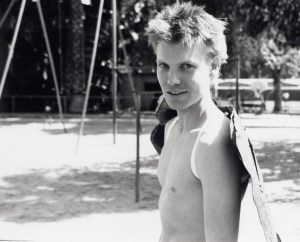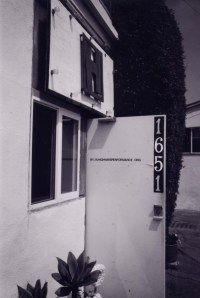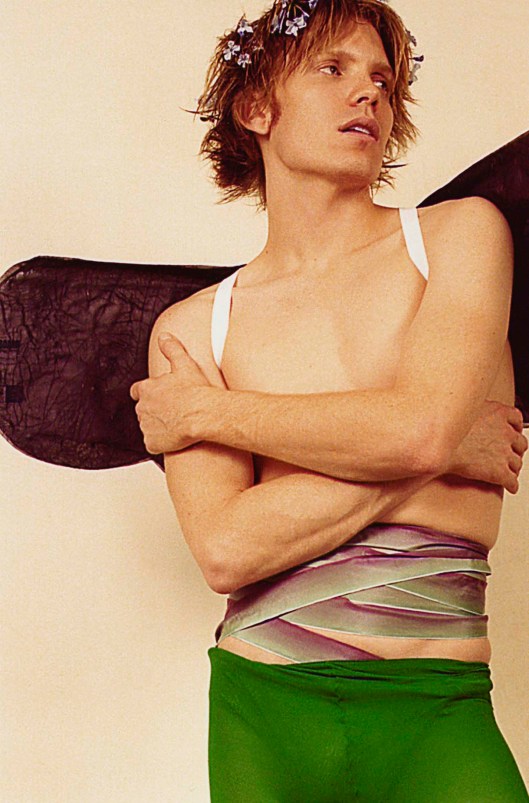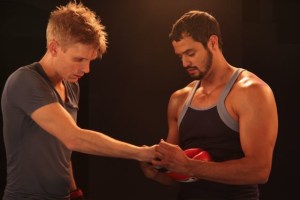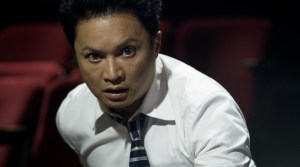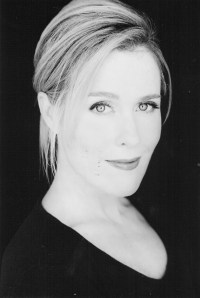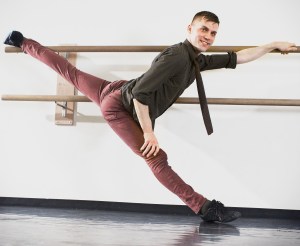Tags
Carlos Pedraza, financing indie film, hunter lee hughes, indie film distribution, indie film fundraising, indie filmmakers, J.T. Tepnapa, Judas Kiss, producing tips, Richard Harmon, Something Like Summer, The Dark Place
One of the benefits of getting into film festivals is meeting other indie filmmakers that inspire you as you slog from program to program, with a few well-earned pit stops at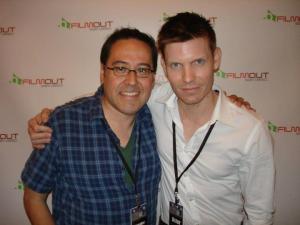 local bars and coffee shops. Carlos Pedraza and I met in just such a fashion at Philly QFest 2011, then again at San Diego FilmOut 2011 and once more at Chicago Reeling 2011. His friendship proved one of the most valuable rewards of the film festival experience.
local bars and coffee shops. Carlos Pedraza and I met in just such a fashion at Philly QFest 2011, then again at San Diego FilmOut 2011 and once more at Chicago Reeling 2011. His friendship proved one of the most valuable rewards of the film festival experience.
Carlos wrote and produced “Judas Kiss,” one of the most popular films on the circuit last year, which earned much success for Carlos and its director J.T. Tepnapa. That’s no surprise, seeing as how Carlos is a thoughtful writer and methodical producer. He’s been generous enough to share some of his producing tips with me privately and, now, is elaborating on his experiences for our blog readers.
Hunter: You’ve been through the process of producing a feature film – “Judas Kiss.” Whew. What an accomplishment! What is something about producing the film that was way harder than anticipated and something that was way easier than anticipated?
Carlos: Producing a feature film is the hardest work I’ve ever done, and I’ve had some challenging projects in my past careers. It’s an order of magnitude more complicated than the short films and web series I’d worked on before. A feature film has a lot of 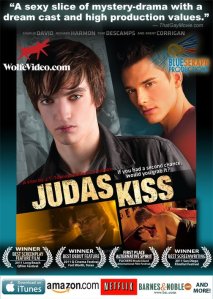 moving parts, in all phases of the project from development and pre-production, through principal photography and to post-production and marketing. Keeping all these gears moving in the right direction and speed — it’s mind-numbing work. I physically trained in the months before to build up my stamina because I knew production would be physically exhausting.
moving parts, in all phases of the project from development and pre-production, through principal photography and to post-production and marketing. Keeping all these gears moving in the right direction and speed — it’s mind-numbing work. I physically trained in the months before to build up my stamina because I knew production would be physically exhausting.
The unexpectedly easier part? How much easier my job is when you hire very competent crew and trust them to do their jobs. If I’d micro-managed this film, it would’ve been terrible.
Hunter: I’ve found that most all up-and-coming filmmakers want to know – how do I score investors? Do you have any tips on this front?
Carlos: Plenty of tips — but no panacea. Finding investors will always be difficult, even when you know people with money, because you’re not really trying to raise money — you’re trying to create faith in you. The investment is a result of their faith in you. Many filmmakers are trying to sell their story to investors when they should be more concerned with selling themselves. That means you have to work on building confidence in your abilities not only as a filmmaker but as a businessperson.
So here are the tips: Put up a website. Early. Get content on it. Often. Give people something to care about. Don’t ask for money until the time comes. If you’ve done your job, people will want to invest in you.
Work social media. When we started “Judas Kiss” there was no Facebook. Today, you absolutely need a Facebook page for your movie. But you can’t just have a page. You need to provide content — often — and opportunities for interacting with your fans. If you don’t keep this up, people will get bored. The last thing you want is people to associate boredom with your movie.
Take your time building fans. Start early. Don’t expect to announce your project in one day, start a Kickstarter campaign and raise all the money you need in one fell swoop. The people who’ve done that are exceptions. You are more likely to be the rule.
Build a fan base. If you’ve worked on other film projects, post about your new project on their website and Facebook pages. Communicate with them. Use Twitter. A lot. But 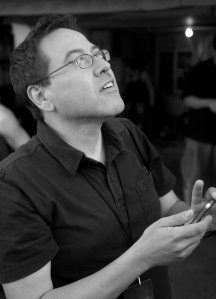 don’t just be spammy. Give people interesting news. For “Judas Kiss,” we did podcasts for two years before we started raising money. We put up hot photos of our stars as we began casting.
don’t just be spammy. Give people interesting news. For “Judas Kiss,” we did podcasts for two years before we started raising money. We put up hot photos of our stars as we began casting.
Use video wherever you can — Twitter, Facebook, your own website. People respond to videos more than any other kind of post. Have a business plan. And not just inside your head. We did a fancy-schmancy published investment prospectus that laid out the project — cast, crew, story, and how we planned to make money. People don’t just fund ideas; investors want to know how you plan to earn back their investment.
Network like crazy. Talk about your project. Inspire people with money. If you do your job right, they’ll come to you and hint about their interest. Be prepared to follow up immediately. That’s why you need that published prospectus. And website. And Facebook page. Etc.
Hunter: I thought your plan to do festivals and then go straight-to-DVD/VOD was brilliant. Are more filmmakers forgoing a traditional theatrical run? Do you have any regrets about this distribution strategy? How did it all work out?
Carlos: Understand one basic truth about independent films and theatrical releases. YOU WILL NEVER MAKE MONEY FROM A THEATRICAL RELEASE. Releasing theatrically is a marketing cost designed to get review and generate interest for people to actually buy the film when it goes to DVD, iTunes or other digital formats. We used our film festival run as a theatrical release. We got reviewed and we got buzz. When the time came to release the film for sale, we were going at full thrusters. Other filmmakers may choose to fund theatrical releases in New York and Los Angeles. There are some awards you can only qualify for if you have a seven-day run in one or both those cities. Some industry newspapers will only review you if you release in L.A. and/or NYC. If your film needs that juice, go for it, but expect to pay dearly. Promoting a film at theaters costs a lot of money. For Judas Kiss, I don’t believe a theatrical release would’ve resulted in significantly more sales than we’ve been fortunate to have. Filmmakers have to have a distribution strategy in mind way back when they’re doing their business plan. If you’re lucky enough to find distribution, be careful about signing away your worldwide rights. Try to keep it on a country-by-country basis. You’d be better off finding a reputable sales and distribution agent to get you distribution deals than you would be seeking theatrical release.
Hunter: In addition to producing “Judas Kiss,” you also wrote it. How did you handle the tension between those two very different jobs. Did the producer in you ever want to cut a scene for logistical reasons that the writer in you really wanted to keep? How did you manage all that?
Carlos: I was trained as a journalist to be able to separate your feelings from your work. I brought that same sensibility to my work as a writer and producer. We spent three years developing the script but when it was done, my work as a writer was done. I shut down that part of my brain. Then I had to worry about how to actually make this movie. That is an exercise in compromise more than creation. There were several scenes we cut when it became untenable to keep them in the film. Sometimes you have to sacrifice part of your vision in service of the grander them you’re working to impart to an audience.
 Hunter: I absolutely loved your lead actor Richard Harmon. He’s so striking on screen and his performance really conveyed the soul torture of a young artist facing life-altering moral questions. Where did you find him?
Hunter: I absolutely loved your lead actor Richard Harmon. He’s so striking on screen and his performance really conveyed the soul torture of a young artist facing life-altering moral questions. Where did you find him?
Carlos: Richard came to us, thanks to his very dedicated agent, who is a real go-getter. She made sure his audition tape got into our hands no matter what. Once we saw that, we knew we had the actor we wanted. At that time, he was also prominently featured in the “Battlestar Galactica” spinoff – “Caprica” – on the Syfy network. So we got to see his work on TV, too. Casting Richard was a no-brainer.
Hunter: After all you went through with “Judas Kiss,” will there be another one? When? Where?
Carlos: After seven months of post-production and a very successful year promoting the film at film festivals, followed by a strong first quarter of sales, we are ready to make another film. Another two, actually. Our production company, Blue Seraph Productions 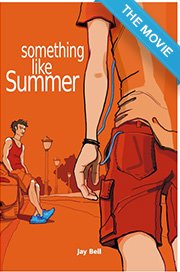 has raised development funding for “Something Like Summer,” an adaptation of the acclaimed love story by Jay Bell, named by Amazon as one of its Best Books of 2011, and nominated for a Lambda Literary Award this year. I am writing the screenplay, and we are co-producing it with Jade Knight Productions from Seattle.
has raised development funding for “Something Like Summer,” an adaptation of the acclaimed love story by Jay Bell, named by Amazon as one of its Best Books of 2011, and nominated for a Lambda Literary Award this year. I am writing the screenplay, and we are co-producing it with Jade Knight Productions from Seattle.
Also in development is “The Dark Place,” a mystery-thriller set in wine country. That script is by our Judas Kiss co-producer Jody Wheeler, and will star Timo Descamps and Sean Paul Lockhart, both starring in “Judas Kiss.”
You can learn more about the two new films at the Blue Seraph website or on the Facebook pages for “Something Like Summer” and “The Dark Place.”
Hunter Lee Hughes is a filmmaker and actor living and working in Los Angeles and the founder of Fatelink. His current feature film Guys Reading Poems is touring film festivals and this blog is dedicated to the process of making his second feature film, “Inside-Out, Outside-In.” If you enjoy the blog, please support our team by following us on Facebook, Twitter (@Fatelink) or Instagram (@Fatelink).




